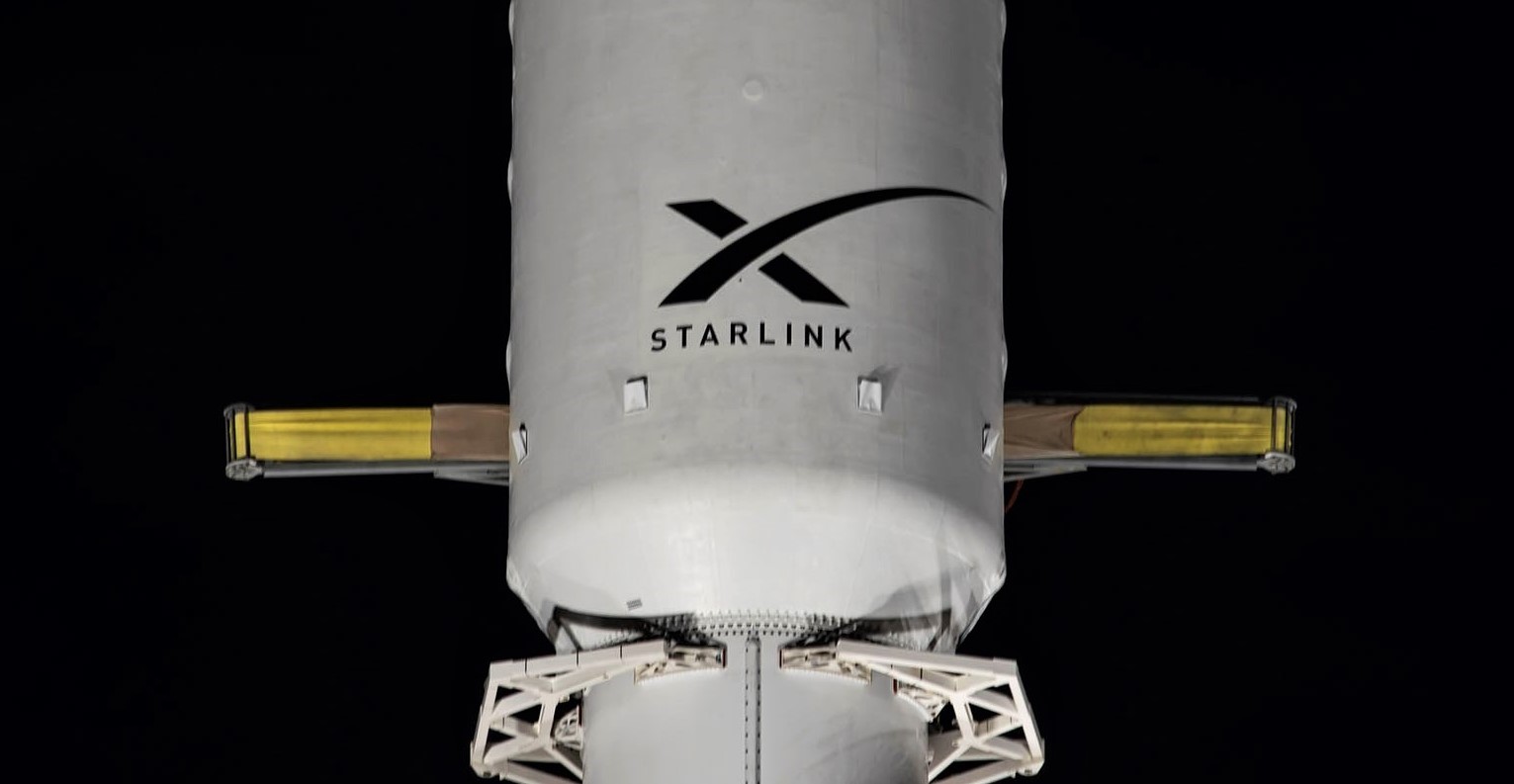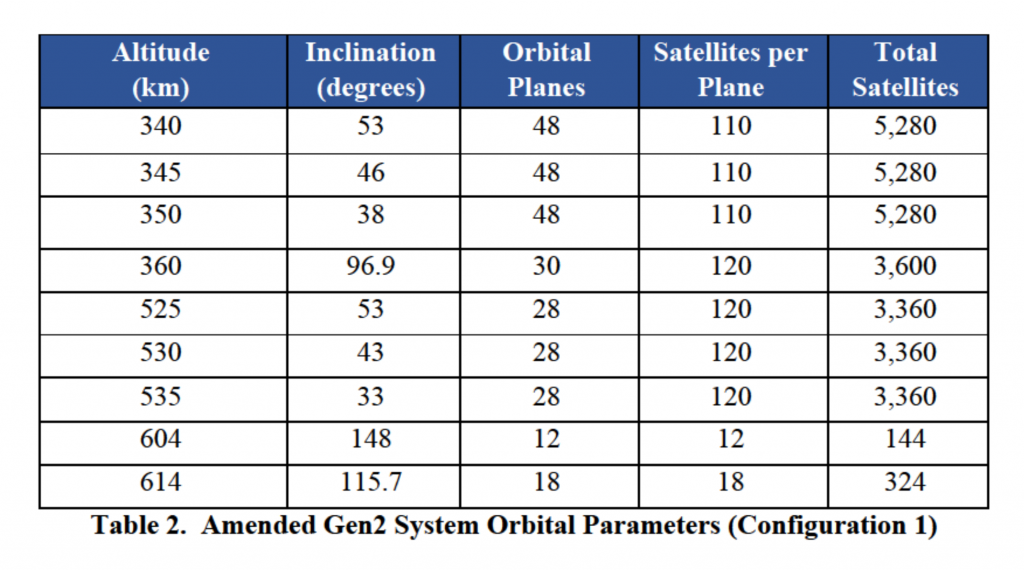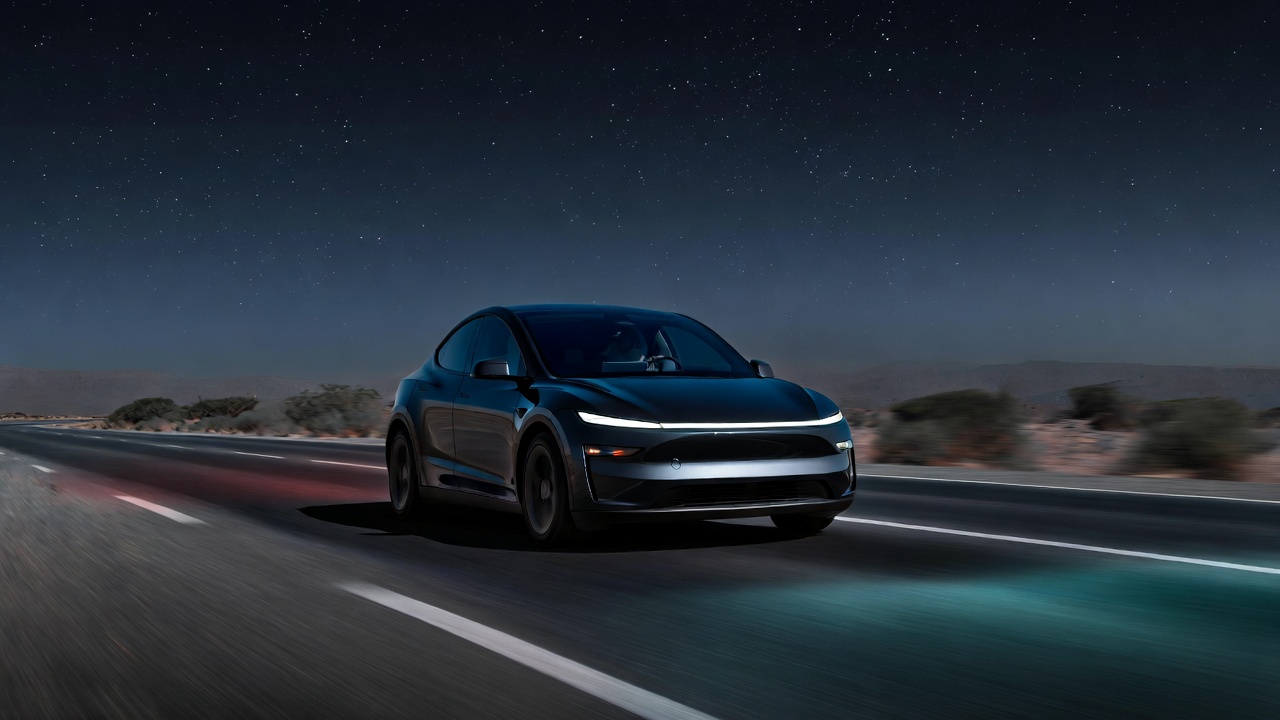

News
SpaceX Starlink Gen2 constellation weakened by “partial” FCC grant
More than two and a half years after SpaceX began the process of securing regulatory approval for its next-generation Starlink constellation, the US Federal Communications Commission (FCC) has finally granted the company a license – but only after drastically decreasing its scope.
In May 2020, SpaceX filed its first FCC license application for Starlink Gen2, an upgraded constellation of 30,000 satellites. In the second half of 2021, SpaceX amended its Starlink Gen2 application to take full advantage of the company’s more powerful Starship rocket and further improve the constellation’s potential utility. Only in December 2021 did the FCC finally accept SpaceX’s Gen2 application for filing, kicking off the final review process.
On November 29th, 2022, the FCC completed that review and granted SpaceX permission to launch just 7,500 of the ~30,000 Starlink Gen2 satellites it had requested permission for more than 30 months prior. The FCC offered no explanation of how it arrived at its arbitrary 75% reduction, nor why the resulting number is slightly lower than a different 7,518-satellite Starlink Gen1 constellation SpaceX had already received a license to deploy in late 2018. Adding insult to injury, the FCC repeatedly acknowledges that “the total number of satellites SpaceX is authorized to deploy is not increased by our action today, and in fact is slightly reduced.”
The update that's rolling out to the fleet makes full use of the front and rear steering travel to minimize turning circle. In this case a reduction of 1.6 feet just over the air— Wes (@wmorrill3) April 16, 2024
That claimed reduction is thanks to the fact that shortly before this decision, SpaceX told the FCC in good faith that it would voluntarily avoid launching the dedicated V-band Starlink constellation it already received a license for in order “to significantly reduce the total number of satellites ultimately on orbit.” Instead, once Starlink Gen2 was approved, it would request permission to add V-band payloads to a subset of the 29,988 planned Gen2 satellites, achieving a similar result without the need for another 7,518 satellites.
In response, the FCC slashed the total number of Starlink Gen2 satellites permitted to less than the number of satellites approved by the FCC’s November 2018 Starlink V-band authorization; limited those satellites to middle-ground orbits, entirely precluding Gen2 launches to higher or lower orbits; and didn’t even structure its compromise in a way that would at least allow SpaceX to fully complete three Starlink Gen2 ‘shells.’ Worse, the FCC’s partial grant barely mentioned SpaceX’s detailed plans to use new E-band antennas on Starlink Gen2 satellites and next-generation ground stations, simply stating that it will “defer acting on” the request until “further review and coordination with Federal users.”

Throughout the partial grant, the FCC couches its decision to drastically downscale SpaceX’s Starlink Gen2 constellation in terms of needing more time “to evaluate the complex and novel issues on the record before [the Commission],” raising the question of what exactly the Commission was doing instead in the 30 months since SpaceX’s first Gen2 application and 15 months since its Gen2 modification. In comparison, SpaceX received a full license for its 7,518-satellite V-band constellation less than five months after applying. SpaceX’s 4,408-satellite Starlink Gen1 constellation – the first megaconstellation ever reviewed by the modern FCC – was licensed 16 months after its first application and eight months after a modified application was submitted.
Adding to the oddity of the unusual and inconsistent decision-making in this FCC ruling, the Commission openly acknowledges that the idea to grant SpaceX permission to launch a fraction of its Starlink Gen2 constellation came from Amazon’s Project Kuiper [PDF], a major prospective Starlink competitor. The FCC says it agreed with Amazon’s argument, stating that “the public interest would be served by taking this approach in order to permit monitoring of developments involving this large-scale deployment and permit additional consideration of issues unique to the other orbits SpaceX requests.”
The V-band Starlink constellation already approved by the FCC was for 7,518 satellites in very low Earth orbits (~340 km). In the first 4,425-satellite Starlink constellation licensed by the FCC, the Commission gave SpaceX permission to operate 2,814 satellites at orbits between 1100 and 1300 kilometers. Increasingly conscious of the consequences of space debris, which would last hundreds of years at 1000+ kilometers, SpaceX later requested permission in 2019 and 2020 to launch those 2,814 satellites to around 550 kilometers, where failed satellites would reenter in just five years. For unknown reasons, the FCC only fully approved the change two years later, in April 2021.
The “other orbits [requested by SpaceX]” that the FCC says create unique issues that demand “additional consideration” of Starlink Gen2 are for 19,400 satellites between 340 and 360 kilometers and 468 satellites between 604 and 614 kilometers. Starlink satellites are expected to be around four times heavier and feature a magnitude more surface area, but the fact remains that the FCC has already granted SpaceX permission to launch almost 3000 smaller satellites to orbits much higher than 604 kilometers and more than 7500 satellites to orbits lower than 360 kilometers. It’s thus hard not to conclude that the Commission’s claims that a partial license denial was warranted by “concerns about orbital debris and space safety,” and “issues unique to…other orbits” are incoherent at best.
Perhaps the strangest inclusion in the partial grant is a decision by the FCC to subject SpaceX to an arbitrary metric devised by another third-party, for-profit company LeoLabs. In a March 2022 letter, LeoLabs reportedly proposed that “SpaceX’s authorization to continue deploying satellites” be directly linked to an arbitrary metric measuring “the number of years each failed satellite remains in orbit, summed across all failed satellites.” The FCC apparently loved the suggestion and made it an explicit condition of its already harsh Starlink Gen2 authorization, even adopting the arbitrary limit of “100 object years” proposed by LeoLabs.
In other words, once the sum of the time required for all failed Starlink Gen2 satellites to naturally deorbit reaches 100 years, the FCC will force SpaceX to “cease satellite deployment” while it “[reviews] sources of satellite failure” and “determine[s] whether there are any adequate and reliable mitigation measures going forward.” The FCC acknowledges that the arbitrary 100-year limit means that the failure of just 20 Starlink satellites at operational orbits would force the company to halt launches. The Commission does not explain how it will decide when SpaceX can restart Starlink launches after a launch halt. SpaceX must simultaneously follow the FCC’s deployment schedule, which could see the company’s license revoked if it doesn’t deploy 3,750 Starlink Gen2 satellites by November 2028 and all 7,500 satellites by November 2031.
Based on the unofficial observations of astrophysicist Jonathan McDowell, SpaceX currently has more 30 failed Starlink Gen1 satellites at or close to their operational altitudes of 500+ kilometers, meaning that SpaceX would almost certainly be forced to stop launching Gen1 satellites if this arbitrary new rule were applied to other constellations. The same is true for competitor OneWeb, which had a single satellite fail at around 1200 kilometers in 2021. At that altitude, it will likely take hundreds of “object years” to naturally deorbit, easily surpassing LeoLabs’ draconian 100-year limit.
In theory, the FCC does make it clear that it will consider changing those restrictions and allowing SpaceX to launch more of its proposed Starlink Gen2 constellation in the future. But the Commission has also repeatedly demonstrated to SpaceX that it will happily take years to modify existing licenses or approve new ones – not a particularly reassuring foundation for investments as large and precarious as megaconstellations.
Ultimately, short of shady handshake deals in back rooms, the FCC’s partial grant leaves SpaceX’s Starlink Gen2 constellation in an undesirable position. For the company to proceed under the current license, it could be forced to redesign its satellites and ground stations to avoid the E-band, or gamble by continuing to build and deploy satellites and ground stations with E-band antennas without a guarantee that it’ll ever be able to use that hardware. There is also no guarantee that the FCC will permit SpaceX to launch any of the ~22,500 satellites left on the table by the partial grant, which will drastically change the financial calculus that determines whether the constellation is economically viable and how expansive associated infrastructure needs to be.
Additionally, if SpaceX accepts the gambit and launches all 7,500 approved Gen2 satellites only for the FCC to fail to approve expansions, Starlink Gen2 would be stuck with zero polar coverage, significantly reducing the constellation’s overall utility. Starlink Gen2 likely represents an investment of at least $30-60 billion (assuming an unprecedentedly low $1-2M to build and launch each 50-150 Gbps satellite). With its partial license denial and the addition of several new and arbitrary conditions, the FCC is effectively forcing SpaceX to take an even riskier gamble with the billions of dollars of brand new infrastructure it will need to build to manufacture, launch, operate, and utilize its Starlink Gen2 constellation.

News
Tesla is not sparing any expense in ensuring the Cybercab is safe
Images shared by the longtime watcher showed 16 Cybercab prototypes parked near Giga Texas’ dedicated crash test facility.

The Tesla Cybercab could very well be the safest taxi on the road when it is released and deployed for public use. This was, at least, hinted at by the intensive safety tests that Tesla seems to be putting the autonomous two-seater through at its Giga Texas crash test facility.
Intensive crash tests
As per recent images from longtime Giga Texas watcher and drone operator Joe Tegtmeyer, Tesla seems to be very busy crash testing Cybercab units. Images shared by the longtime watcher showed 16 Cybercab prototypes parked near Giga Texas’ dedicated crash test facility just before the holidays.
Tegtmeyer’s aerial photos showed the prototypes clustered outside the factory’s testing building. Some uncovered Cybercabs showed notable damage and one even had its airbags engaged. With Cybercab production expected to start in about 130 days, it appears that Tesla is very busy ensuring that its autonomous two-seater ends up becoming the safest taxi on public roads.
Prioritizing safety
With no human driver controls, the Cybercab demands exceptional active and passive safety systems to protect occupants in any scenario. Considering Tesla’s reputation, it is then understandable that the company seems to be sparing no expense in ensuring that the Cybercab is as safe as possible.
Tesla’s focus on safety was recently highlighted when the Cybertruck achieved a Top Safety Pick+ rating from the Insurance Institute for Highway Safety (IIHS). This was a notable victory for the Cybertruck as critics have long claimed that the vehicle will be one of, if not the, most unsafe truck on the road due to its appearance. The vehicle’s Top Safety Pick+ rating, if any, simply proved that Tesla never neglects to make its cars as safe as possible, and that definitely includes the Cybercab.
Elon Musk
Tesla’s Elon Musk gives timeframe for FSD’s release in UAE
Provided that Musk’s timeframe proves accurate, FSD would be able to start saturating the Middle East, starting with the UAE, next year.

Tesla CEO Elon Musk stated on Monday that Full Self-Driving (Supervised) could launch in the United Arab Emirates (UAE) as soon as January 2026.
Provided that Musk’s timeframe proves accurate, FSD would be able to start saturating the Middle East, starting with the UAE, next year.
Musk’s estimate
In a post on X, UAE-based political analyst Ahmed Sharif Al Amiri asked Musk when FSD would arrive in the country, quoting an earlier post where the CEO encouraged users to try out FSD for themselves. Musk responded directly to the analyst’s inquiry.
“Hopefully, next month,” Musk wrote. The exchange attracted a lot of attention, with numerous X users sharing their excitement at the idea of FSD being brought to a new country. FSD (Supervised), after all, would likely allow hands-off highway driving, urban navigation, and parking under driver oversight in traffic-heavy cities such as Dubai and Abu Dhabi.
Musk’s comments about FSD’s arrival in the UAE were posted following his visit to the Middle Eastern country. Over the weekend, images were shared online of Musk meeting with UAE Defense Minister, Deputy Prime Minister, and Dubai Crown Prince HH Sheikh Hamdan bin Mohammed. Musk also posted a supportive message about the country, posting “UAE rocks!” on X.
FSD recognition
FSD has been getting quite a lot of support from foreign media outlets. FSD (Supervised) earned high marks from Germany’s largest car magazine, Auto Bild, during a test in Berlin’s challenging urban environment. The demonstration highlighted the system’s ability to handle dense traffic, construction sites, pedestrian crossings, and narrow streets with smooth, confident decision-making.
Journalist Robin Hornig was particularly struck by FSD’s superior perception and tireless attention, stating: “Tesla FSD Supervised sees more than I do. It doesn’t get distracted and never gets tired. I like to think I’m a good driver, but I can’t match this system’s all-around vision. It’s at its best when both work together: my experience and the Tesla’s constant attention.” Only one intervention was needed when the system misread a route, showcasing its maturity while relying on vision-only sensors and over-the-air learning.
News
Tesla quietly flexes FSD’s reliability amid Waymo blackout in San Francisco
“Tesla Robotaxis were unaffected by the SF power outage,” Musk wrote in his post.

Tesla highlighted its Full Self-Driving (Supervised) system’s robustness this week by sharing dashcam footage of a vehicle in FSD navigating pitch-black San Francisco streets during the city’s widespread power outage.
While Waymo’s robotaxis stalled and caused traffic jams, Tesla’s vision-only approach kept operating seamlessly without remote intervention. Elon Musk amplified the clip, highlighting the contrast between the two systems.
Tesla FSD handles total darkness
The @Tesla_AI account posted a video from a Model Y operating on FSD during San Francisco’s blackout. As could be seen in the video, streetlights, traffic signals, and surrounding illumination were completely out, but the vehicle drove confidently and cautiously, just like a proficient human driver.
Musk reposted the clip, adding context to reports of Waymo vehicles struggling in the same conditions. “Tesla Robotaxis were unaffected by the SF power outage,” Musk wrote in his post.
Musk and the Tesla AI team’s posts highlight the idea that FSD operates a lot like any experienced human driver. Since the system does not rely on a variety of sensors and a complicated symphony of factors, vehicles could technically navigate challenging circumstances as they emerge. This definitely seemed to be the case in San Francisco.
Waymo’s blackout struggles
Waymo faced scrutiny after multiple self-driving Jaguar I-PACE taxis stopped functioning during the blackout, blocking lanes, causing traffic jams, and requiring manual retrieval. Videos shared during the power outage showed fleets of Waymo vehicles just stopping in the middle of the road, seemingly confused about what to do when the lights go out.
In a comment, Waymo stated that its vehicles treat nonfunctional signals as four-way stops, but “the sheer scale of the outage led to instances where vehicles remained stationary longer than usual to confirm the state of the affected intersections. This contributed to traffic friction during the height of the congestion.”
A company spokesperson also shared some thoughts about the incidents. “Yesterday’s power outage was a widespread event that caused gridlock across San Francisco, with non-functioning traffic signals and transit disruptions. While the failure of the utility infrastructure was significant, we are committed to ensuring our technology adjusts to traffic flow during such events,” the Waymo spokesperson stated, adding that it is “focused on rapidly integrating the lessons learned from this event, and are committed to earning and maintaining the trust of the communities we serve every day.”








